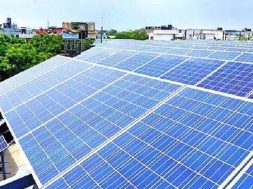In Short : India’s per capita energy consumption has grown 2.55% annually over the past decade, driven by economic growth, urbanization, and increased use of energy-intensive technologies. As demand rises, India is focusing on enhancing energy efficiency, increasing renewable energy capacity, and improving infrastructure. Meeting future energy needs while ensuring sustainability and energy access for all remains a critical challenge for the country.
In Detail : India’s per capita energy consumption has risen at an annual rate of 2.55% over the past decade, reflecting the country’s growing energy demand driven by economic development, urbanization, and industrial growth. This increase in consumption is a result of expanding infrastructure, higher living standards, and increased use of energy-intensive technologies in sectors like transportation, manufacturing, and residential use.
As India’s population continues to grow, the demand for energy is expected to rise even further. The expansion of the middle class and an increase in consumer appliances, such as air conditioners, refrigerators, and electronic devices, contribute significantly to this growing consumption. The rapid urbanization across the country also adds to the rising energy needs, with cities requiring more electricity for infrastructure, housing, and industries.
The energy mix in India has also undergone a shift, with a growing reliance on both renewable and conventional energy sources. While renewable energy sources, including solar and wind, have gained traction, India continues to rely on coal and other fossil fuels for a substantial portion of its energy. This shift, though beneficial for clean energy goals, also raises concerns about energy security and the environmental impact of growing energy consumption.
The rise in per capita energy consumption has implications for energy policy and infrastructure development. India’s government has set ambitious targets for energy efficiency improvements, clean energy adoption, and reducing carbon emissions. Efforts such as the Perform, Achieve, and Trade (PAT) scheme and the National Action Plan on Energy Efficiency (NAPEE) aim to reduce the intensity of energy consumption across various sectors.
The growing energy demand also underscores the importance of ensuring energy access to all citizens, particularly in rural and underserved areas. Providing affordable and reliable electricity to these regions is crucial for India’s inclusive growth. At the same time, enhancing grid infrastructure, energy storage solutions, and promoting decentralized renewable energy sources are essential to meet future demand.
With the continued increase in per capita energy consumption, India faces the dual challenge of balancing economic growth with sustainability. Strategic investments in energy efficiency, renewable energy, and grid modernization will play a critical role in ensuring that India meets its energy needs while mitigating environmental impact and supporting long-term energy security.










